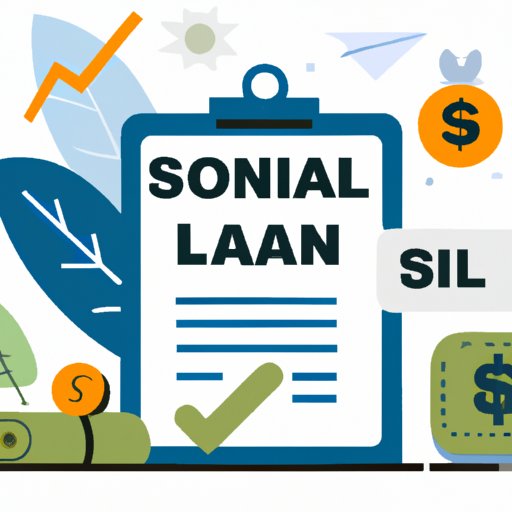
I. Introduction
For many entrepreneurs, securing a small business loan is a crucial step in launching or expanding their business. A loan can help cover expenses, stabilize cash flow, and fund growth opportunities. However, navigating the loan application process can be daunting, especially for first-time borrowers. This article aims to demystify the process by offering a comprehensive guide on how to get a small business loan.
II. Understanding the Basics of Small Business Loans
Small business loans come in various forms, including term loans, SBA loans, and lines of credit. Each type of loan has its own benefits and risks, so it’s important to understand the differences before selecting a loan. Generally, lenders look for businesses with a solid plan for repaying the loan, a good credit score, and a proven track record of financial stability. However, alternative lenders may have different requirements.
When selecting a loan, consider various factors such as interest rates, terms, and fees. Shop around multiple lenders to find the best offer.

III. Preparing a Winning Loan Application
Preparing a strong loan application is crucial for securing funding. This starts with having a solid business plan that demonstrates the business’s goals and strategies. Additionally, lenders will examine the borrower’s credit score, so it’s important to have a good personal credit score. Other documents that may be required include financial statements, tax returns, and a loan application form.
When collaborating with lenders, it’s recommended to keep in mind the various requirements that each lender may have.
IV. Researching and Applying for Government Small Business Loans
Government small business loans, such as SBA loans or USDA loans, can be an attractive option for business owners. These loans typically offer lower interest rates and favorable terms compared to traditional loans. The eligibility criteria and application process for each type of loan vary, so it is critical to thoroughly understand the requirements of each small business loan provider.
V. Alternative Small Business Funding Options
If traditional loans aren’t an option, business owners may consider alternative funding options. Crowdfunding, peer-to-peer lending, and business grants are some of the options available.
Although these options may have unique requirements and terms, they offer creative and innovative ways of financing a business.
VI. How to Boost Your Chances of Approval
To increase the likelihood of loan approval, entrepreneurs should take measures such as establishing a good credit score, building business credit, and being transparent with lenders. Provide a realistic repayment plan and outline the utilization of funds precisely.
VII. Managing Loan Repayments
It’s essential to manage loan repayments well, especially for businesses that operate on tight budgets. Some best practices include creating a budget plan, keeping accurate records of expenses and payments, and staying in contact with the lender.
Moreover, building and maintaining a positive relationship with the lender can help entrepreneurs navigate any challenges that may arise during the loan repayment period.
VIII. What to Do if You Get Rejected for a Business Loan
Rejection is common, and there are various steps entrepreneurs can take if their loan application is rejected. Options include improving credit scores, finding a co-signer, or looking into alternative funding sources.
IX. Conclusion
Securing funding is an essential aspect of running a successful business. This article has provided a comprehensive guide on how to secure a small business loan by understanding the basics, preparing a winning loan application, researching and applying for government loans, considering alternative funding options, boosting chances of loan approval, managing loan repayments, and bouncing back from loan rejection. Taking action on these strategies will help increase the likelihood of obtaining a small business loan.




